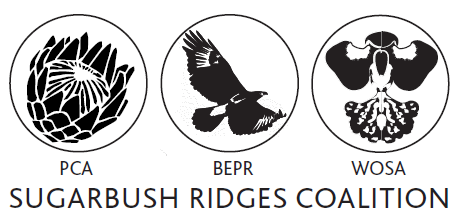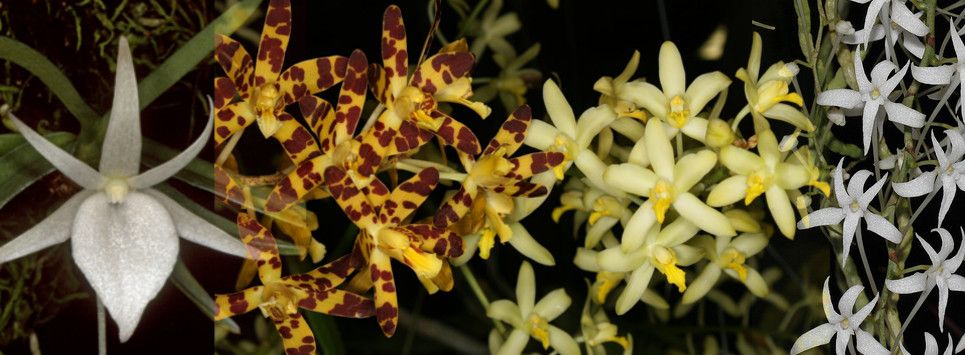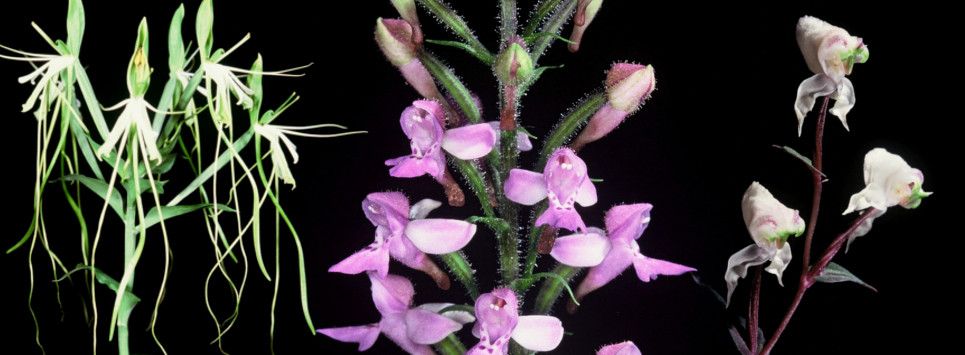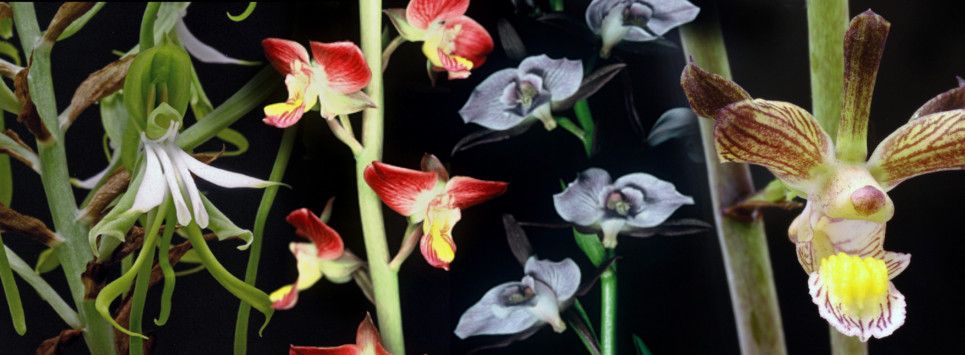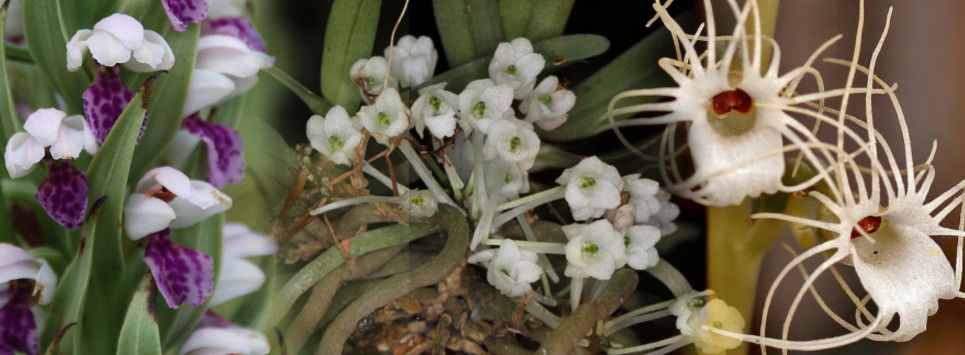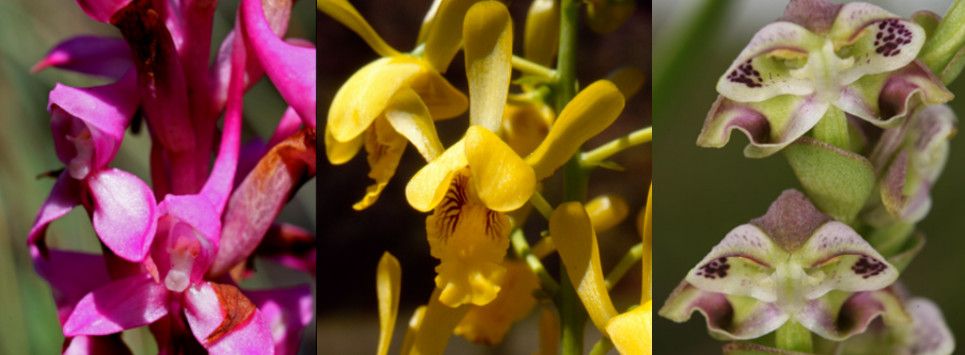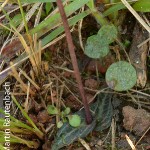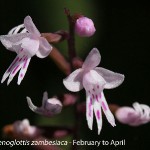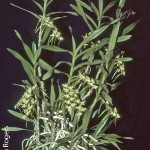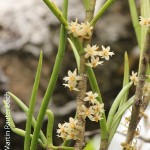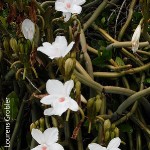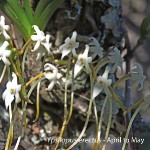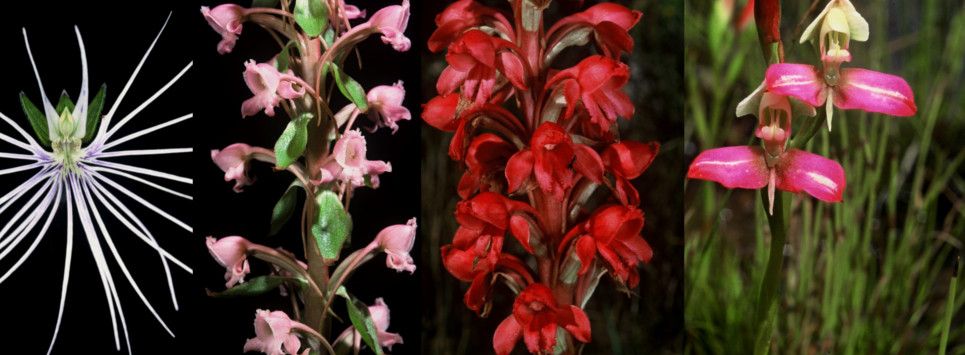
Welcome to WOSA
Very little is known about indigenous orchids by the public who are largely unaware that there are just under 500 species of which 45 are endemic (only occur in South Africa). Very little research has been carried out regarding ecology, conservation and propagation although a number of species have become extinct and habitat destruction is progressing at an alarming rate. Up until now there has been no attempt to address these issues on a National scale and Provincial legislation and cooperation is fragmented. Only through a focused National integrated effort that engages the public and all roll players will survival of orchids be assured.
Stenoglottis longifolia
Description
Fairly robust lithophyte or epiphyte, up to 600mm tall. Leaves 6-10 in a basal rosette, strap-shaped to narrowly elliptic, uniformly green, margins slightly wavy. Inflorescence lax to dense, up to 80 flowers that are lilac to white with darker spots all over. Sepals similar, up to 10mm long. Petals shorter than sepals, enclosing the column. Lip 5-lobed. Spur absent.
Stenoglottis woodii
Description
Slender terrestrial or lithophyte, up to 200mm tall. Leaves 5-20 in a basal rosette, narrowly elliptic to egg-shaped, uniformly coloured. Inflorescence lax, 4-20 flowers, white to pink, often with purple spots at the base. Sepals similar, up to 5mm long. Petals erect, 3,5mm long.
Stenoglottis zambesiaca
Description
Very slender lithophyte, or rarely an epiphyte, up to 350mm tall. Leaves 6-12 in a basal rosette, strap to narrowly spear-shaped, uniformly covered or sometimes spotted, or slightly wavy. Inflorescsence lax, flowers lax, pale lilac or pink, lip darker and spotted. Column enclosed by petals. Spur absent.
Tridactyle bicaudata subsp. bicaudata.
Description
Slender to robust epiphyte or lithophyte, stems stout, usually erect, up to 350mm long and 4-6mm in diameter, roots separated from leaves by a length of bare stem. Leaves in 2 opposite rows, leathery, linear to strap-shaped, rounded, unequally bilobed. Inflorescences dense, appearing from the axils of the leaves, 30-80mm long, 6-20 flowers, upward facing, palish yellow to brown. Also see subs. rupestris.
Tridactyle bicaudata subsp. rupestris
Description
Please see the article on Tridactyle bicaudata subsp. bicaudata. This differs from the other form, which is lithophytic, leaves stiff, curved and up to 60mm long.
Tridactyle gentilii
Description
Slender epiphyte, reed like stems up to 400mm long and 7mm in diameter. Leaves linear to strap-shaped, unequally bilobed and up to 150mm long. Inflorescences fairly dense, borne below the leaves, up to 70mm long. Up to 8 flowers, upward facing, white, up to 20mm in diameter, spur long up to 80mm.
Tridactyle tricuspis
Description
Slender to robust epiphyte, Stems erect and up to 200mm long, but usually much shorter, 6mm in diameter. Roots produced along the length of the stem to a base of leaves. Leaves closely overlapping in 2 rows, linear or strap-shaped, unequally bilobed. Inflorescences fairly dense, borne below the leaves and up to 120mm long. 10-25 flowers greenish to cream, up to 11mm long. Clump forming.
Tridactyle tridentata
Description
Slender epiphyte or lithophyte, stems up to 300mm long, branching, angled and 3mm in diameter. Roots restricted to the very base. Leaves arranged in 2 rows, circular in cross-section, grooved, stiff and often fleshy. Inflorescences borne below the leaves, shorter than 5mm, 2-5 flowers which are pale green to cream, which are up to 8mm in diameter, sepals spreading , petals strap shaped, lip side lobes tooth like, spur 7-8mm long.
Vanilla roscheri
Description
Robust liana of indeterminate length. Stem greenish-brown, cylindrical, succulent, up to 20mm in diameter, with a channel on either side and short roots arising from nodes. Leaves rudimentary, membranous, brown and green, up to 30mm long. Inflorescences terminal or axillary, up to 85 flowers, white with a pink throat. Petals and sepals spear-shaped to oblong, up to 80mm long.
Ypsilopus erectus
Description
Slender epiphyte or lithophyte, growing up to 150mm tall. Stems 20-30mm long, erect, roots borne from the base. Leaves borne in an apical fan, linear to strap-shaped, up to 150 x 6,5mm. Inflorescences lax, several, arising from below the leaves, 120mm long, flowers 2-12, white and in 2 ranks.
Zeuxine africana
Description
Slender terrestrial, grows up to 200mm tall. Leaves, overlapping, numerous, erect, linear to strap-shaped, grading into the bracts. Inflorescence cylindrical, many flowered with bracts overlapping the flowers Flowers are white with a yellow lip, 3mm in diameter.
For more information regarding the preservation of South Africa's wild Orchids or if you would like to get involved please email This email address is being protected from spambots. You need JavaScript enabled to view it. or complete this short form Contact Us and we will contact you.
